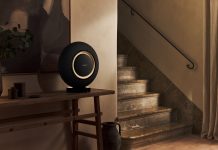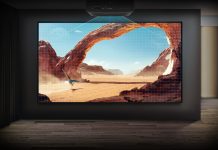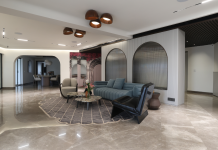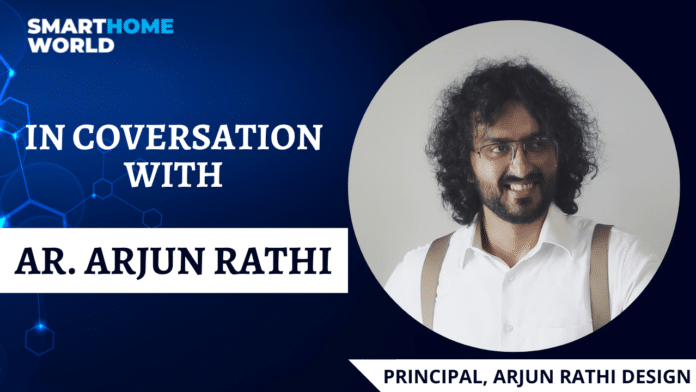
Arjun Rathi is a Mumbai-based architect running a multi-disciplinary studio working across Architecture & Lighting Design called Arjun Rathi Design. Through his studio’s work, he interprets space through the lens of lighting, designs fixtures and installations. He is also the co-founder of the Rural Modern Glass Studio in Mumbai, which is India’s first art-glass studio exploring hand-blown glass across glass-art, home accessories, objects and tableware. Smart Home World takes his on the latest lighting technology and design trends.
Lighting and interiors go hand in hand, can you explain how lighting plays a crucial role within the design process of all your projects?
As a studio, we mainly explore lighting design through the design and execution of decorative fixtures and installations to illuminate spaces. We always aim to capture the client’s imagination through the exploration of materials, shapes, and forms to define or accentuate the room, combined with lighting effects and shadows generated by the materials to create the ambience. We offer a high level of customisation even to our standard products, from material finishes, glass colours, and size customisation, allowing our products to be used across different aesthetics and living/working patterns. Fixture formats like Ceiling Flushmounts, Wallscones, Hanging Pendants, Standing and Table Lamps, Lighting Installations, and Mobils are some typologies we try to implement with the required aesthetic, functionality and materials to create the necessary ambience.

Another change in this segment is wireless lighting control. This is now becoming mainstream. How do you incorporate this technology into your projects?
Since most of our work is customised in design and fabricated for the clients, interior designers and architects, we can incorporate automation and other smart home system modules within our fittings. Sensor technology and automation give us a range of dimmable and colour-changing features which add value to our customised works.
An increasing number of drivers and light engines from various manufacturers are now available in India. How do you incorporate their clever technology, and how do you adopt this in your project?
Regarding Drivers, Ballasts and other light technologies, the market is flooded with a lot of brands, local and international. So firstly, it is important to segregate which brands work with the site compatibility we are supplying to, and the availability of spares and services in the long term. Many times, our selections are also based on which branded fittings can be incorporated into our fixtures in the most invisible manner, such that the focus is mainly on the decorative fixture and not the technology components powering it. As a studio we always try to integrate LED fittings within our fixtures, which helps us eliminate the need for bulbs and short-term maintenance, making it user-friendly.

What are your views on lighting controls, the benefits, and the science behind them?
Lighting controls and automation have added a new dimension to convenience when operating decorative or technical lighting for home and office space. We design for are of a variety of sizes and different client bases.
What are the most important considerations you make when collaborating with a system integrator?
Since the majority of the studio focuses on designing and building decorative lighting fixtures, we tend to design our products around the technological components we use. We always look for companies which make the required components as invisible as possible and which can offer the best service or replacement warranty for the future. It is also important to note, that many brands are compatible with each so we tend to see which ones are readily available in different parts of the country or the world, where the products are being supplied. This process gives us a lot of flexibility and does not restrict us to the limitations of any brand or control system.
Successful luminaire design will always depend on technical innovation and material. What are your views on the same?
Our products are generally exploring a variety of materials and production processes, many times we combine hand-made crafts from different parts of the country with industrially produced components; as a studio we work as much as possible with local vendors and have upskilled the craft and fabrication community to cater to our lighting design requirements. Sustainability for us has always been to upskill and support the craft and artisan communities, and combining these handmade/fabricated components with modern lighting technology defines the fixtures we produce.

What is the biggest innovation in the lighting sector? How has it revolutionized the entire industry and contributed to the lifestyles of the urban mass?
Currently, the LED revolution has been defining consumption and innovation in the lighting sector. Power efficient lighting and long-lasting fixtures are the need of the hour and LED has been the solution in recent decades and maybe in the years to come. Also, the flexibility of LED, when it comes to colour changing or control-related features, has enhanced the user experience. The technology is implementable in a variety of sizes, indoor and outdoor applications which most of us experience in a day-to-day setting.
What is the current demand for smart lighting in India?
Smart lighting is in high demand in Tier I and developing Tier II and Tier III cities. Clients have become increasingly educated on available systems and the convenience they offer; hence there is a high demand to integrate them in projects across various budget categories.
According to you, in which sector (hospitality, commercial, residential), traditional lighting is getting rapidly replaced by smart lighting?
Due to the high requirement for artificial lighting, smart lighting technology has seen a lot of success and innovation in hospitality and commercial application. Designing technical lighting which is flexible to different users, and living and working formats have been the biggest success of smart lighting.
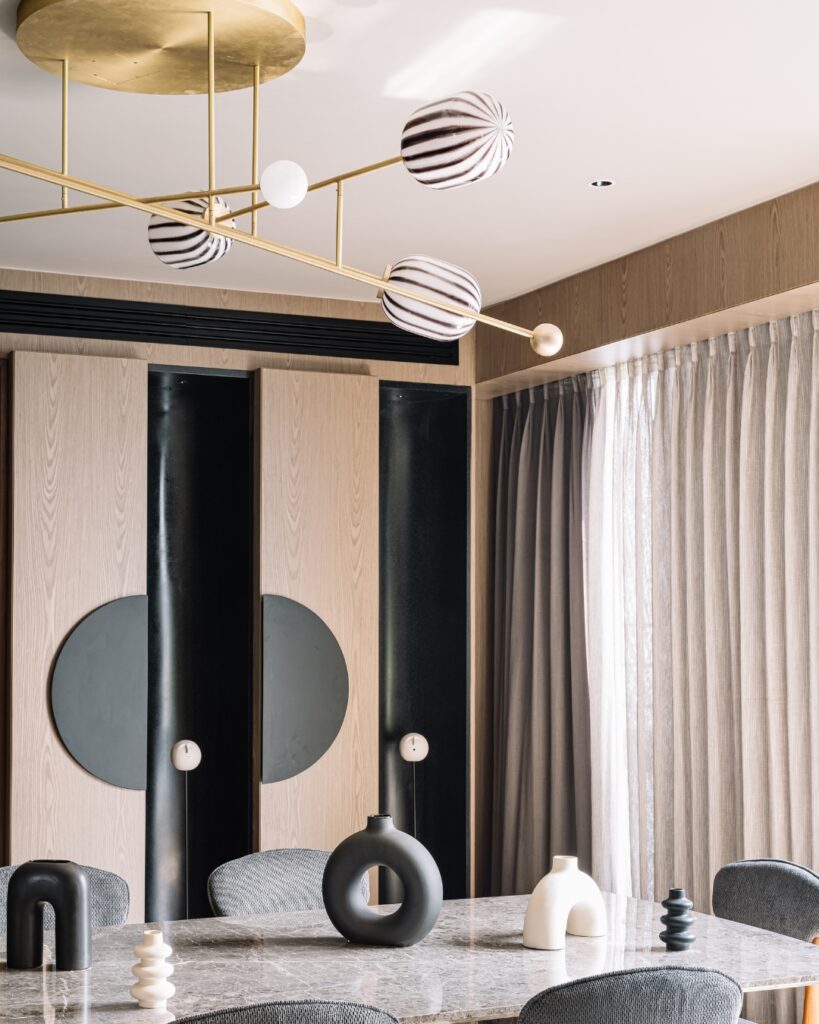
In what ways smart lighting is capable of promoting better health both physically and mentally?
Whether a workspace’s light source is natural, artificial, bright and blue, or dim and yellow, the type of light that employees are exposed to not only impacts mood, circadian rhythms and physical health, but also affects productivity and creativity. In general, warm yellow lights are better for relaxing and unwinding while cool blue-white lights are better for waking up, working and concentrating. Creatively, you are at your best when you are well rested, alert and energised, and the right lighting can put you in the right state. But lighting that is too dim can strain your eyes and make you feel drowsy and tired. Too harsh lighting on the other hand can be harsh to your eyes and disrupt your sleep.
Your views on the future of the lighting industry, what can we expect from the firm in the future of design?
Many of us spend majority of our time living and working in different environments lit by artificial light. Through our fixtures, we aim to create magical stories through a play of colour, shadows and darkness; which formed the fundamentals Light. Form(s). Post-covid we started exploring Indian-inspired, pop-colour whimsical lighting collection; we started exploring nostalgia with Indian candies and desserts. As a country known for its rich culture, bright and vivid colours, a lot of our modern design shy-ed away from it. We wanted people to be overwhelmed with light and colour in a way they have never experienced, and started the Rural Modern Glass Studio, to help us explore hand-blown art-glass lighting, something new to the space of Indian lighting.
Can you share projects, where you have incorporated this technology and how the projects have benefitted from it?
One of our creations The Gulmohar Bloom is an installation comprising of casted brass branches with glass rondels inspired by the Indian gulmohar flower. The hand-blown glass mix colours of vermillion, gulmohar yellow and orange, with marble-finished glass globes to balance out the lighting designed for the pre-function area of the Almond Banquet, designed by Morph Lab, located in Kolkatta. The botanical installation spans 1,300 sq ft of ceiling area in two diagonally incremental branch systems, incorporating over 200 light fittings controllable by the automation system. Each of the 183 hand-blown glass flowers has dimmable LEDs along with warmer tone filament bulbs used in the 54 marbled- glass bubbles; attached to a control system and tuned as per various mood settings required in the pre-function area of the banquet. We have used LED Vendor – Chloros Eco Solutions and driver we have opted for Osram.
For More Information Visit: https://www.arjunrathi.com/




